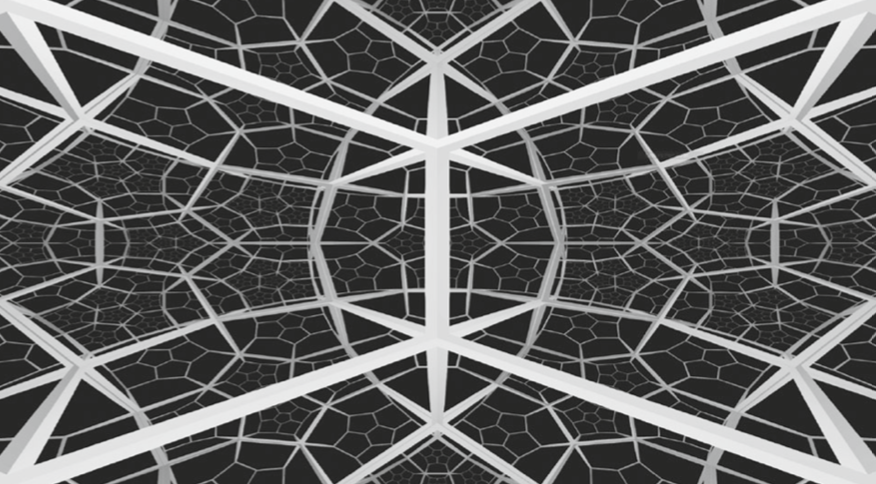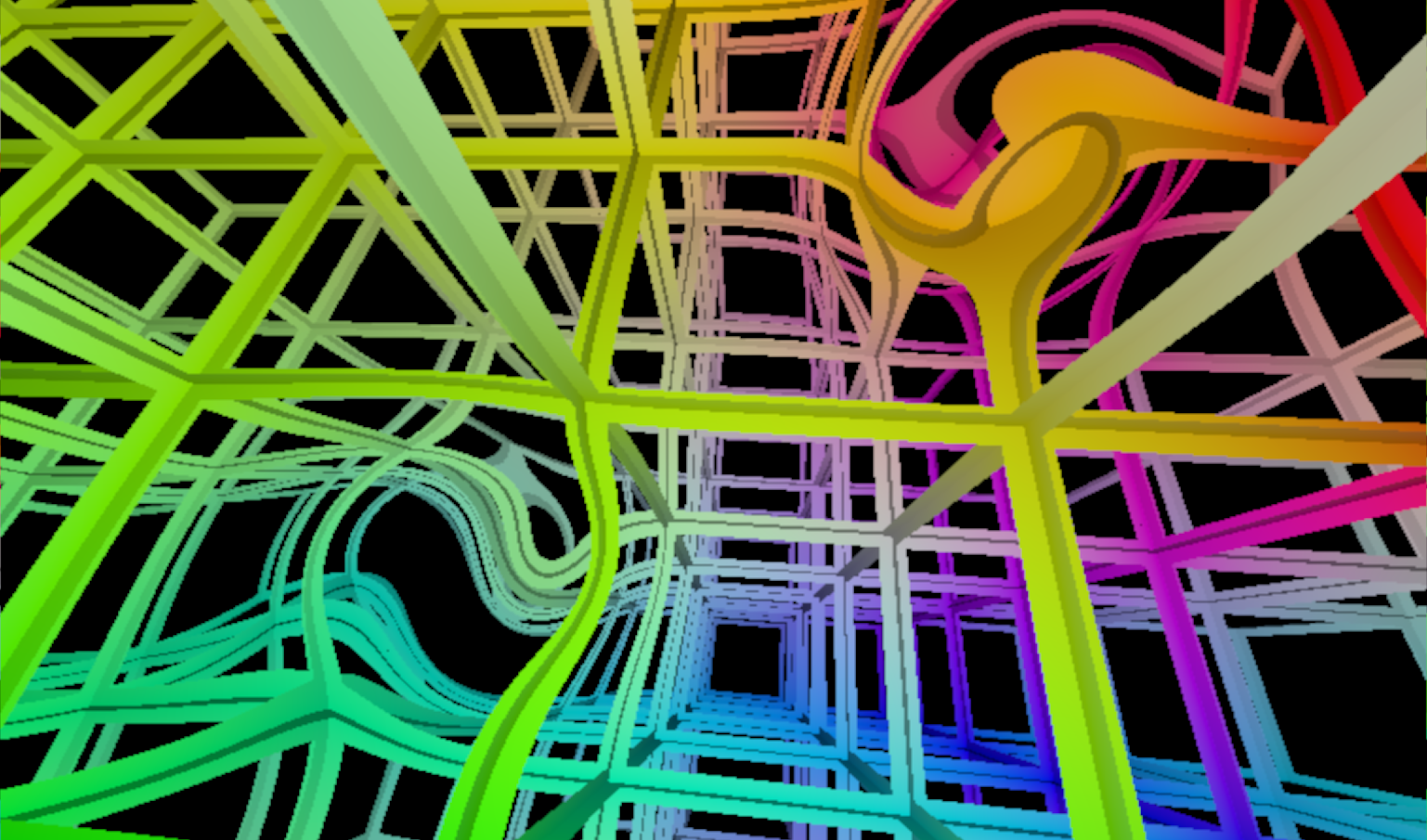Ray Tracing Virtual Reality
Ray-VR is a novel platform for real time stereo ray tracing, constructed on top of Falcor, NVidia’s scientific prototyping framework. Ray-VR performance is very flexible. It can adapt a VR experience to different hardware constraints and is also totally compatible with current VR creation workflow.
Seeing Beyond R3
We investigate Non-Euclidean spaces using ray tracing. Our research includes new algorithms to trace (possibly curved) rays in these spaces with non-trivial geometry and topology.
Visualization of Classical Non-Euclidean Spaces
The project exploits the power of the new generation of GPU’s based on the NVIDIA’s Turing architecture in order to develop new methods for intuitive exploration of landscapes featuring non-trivial geometry and topology in virtual reality.
Visualization of Nil, SL2(R) and Sol Spaces
A look into the most beautiful and intriguing spaces among the eight Thurston geometries, Nil, SL2(R), and Sol spaces.
These geometries are examples of Lie groups, which are manifolds that admit a group structure.
Curved Spaces
We are interested in Non-Euclidean Geometries possibly with Non-Trivial Topologies.
Consequently, since the underlying geometry is not flat, rays in such spaces are “curved”.
Riemannian Ray Tracing
The investigation of a path tracer algorithm to compute the global illumination of non-Euclidean manifolds.
We use the 3D torus as an example.
Procedural Geometry
Proceduray is a novel engine with native support for procedural primitive ray tracing, designed to be a fair compromise between flexibility and productivity. Another objective of this work is to expand the discussion about host code in the RTX architecture.
References
Papers, technical reports and other scientific publications related to the project.
News Clips
Announcements and coverage by the media about our project and research in the area.








